LTR Training Tip #16: Great Looking Manes and Tails
Meredith shares her secrets to getting beautiful manes and tails on your equines—including mules!
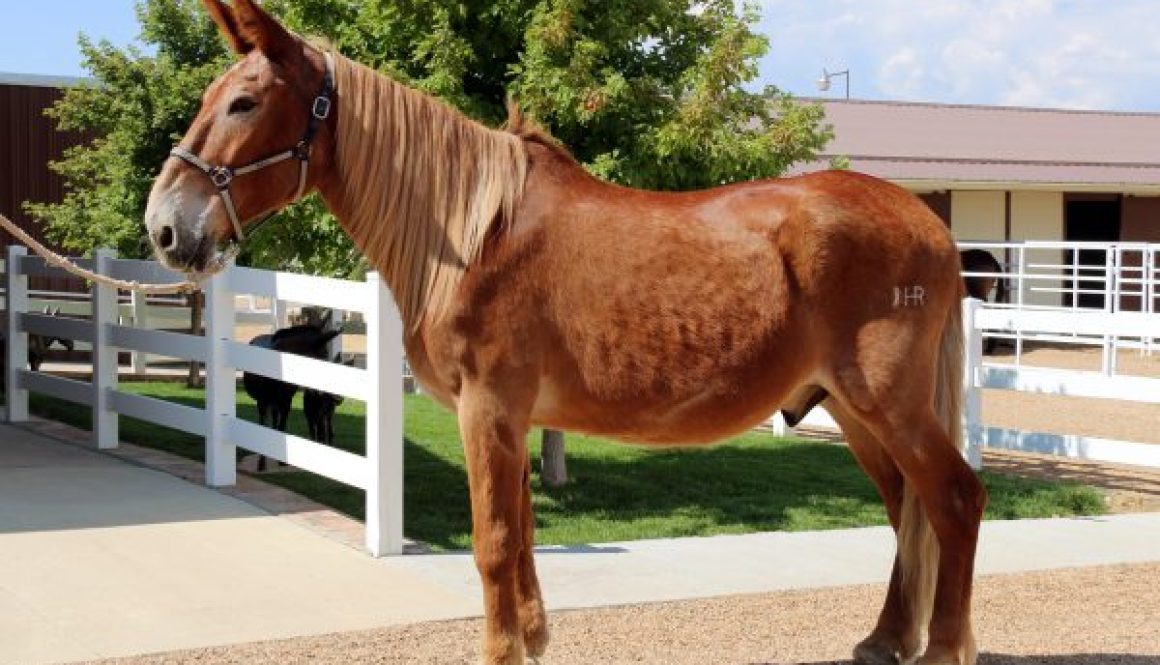
Meredith shares her secrets to getting beautiful manes and tails on your equines—including mules!

In order for your seat and leg cues to be accurate and clear to your equine, you will need to improve stability in your own seat and balance.

Transitions in your equine’s gait, speed or direction should always be smooth and fluid and not bouncy.

Correctly done Flying Lead Changes should take place simultaneously, so it is important to build strength and balance through Simple Lead Changes before even attempting Flying Lead Changes.

The Hourglass Pattern helps your equine to build good postural balance and core strength with symmetrical muscle development.

Having your equine stand still during mounting is the result of a calm and sensible approach to ALL phases of the preliminary groundwork. Going forward with a logical and sequential approach will help the equine to stay calm and prevent any resistance.

Trouble usually begins when you get in a hurry. Be sure to take your time and progress at the speed of your equine. As you do these mounting exercises, be sure your equine is comfortable and calm before moving on, and don’t forget the oat rewards!

Soundness begins with the hooves. There is a wide variety of reasons, so learning to assess if and when your equine needs shoes, and how often hoof care is needed is critical to your equine’s overall physical postural balance and general health!

At the Lucky Three Ranch, it’s always safety first! You’re going to need the proper equipment, such as a regulation riding helmet and appropriate, fitted riding boots. Once properly prepared, it’s time for a safe and enjoyable ride.

Ground driving helps your equine to understand the rein cues coming from the drive lines. When working through lateral obstacles, your equine may be unsure or fearful. Be sure to work patiently on your verbal commands and take obstacles slowly, while being willing to gently help him through. And don’t forget the reward for good behavior.

Ground driving your equine through the straight forward obstacles is a process of turning fear into curiosity, then finesse, coordination, competence and, finally, confidence.

Lateral ground driving should be done slowly and taken in a natural sequence. Learn how to progress from lateral driving along the rail to laterally ground driving in the Hourglass Pattern.
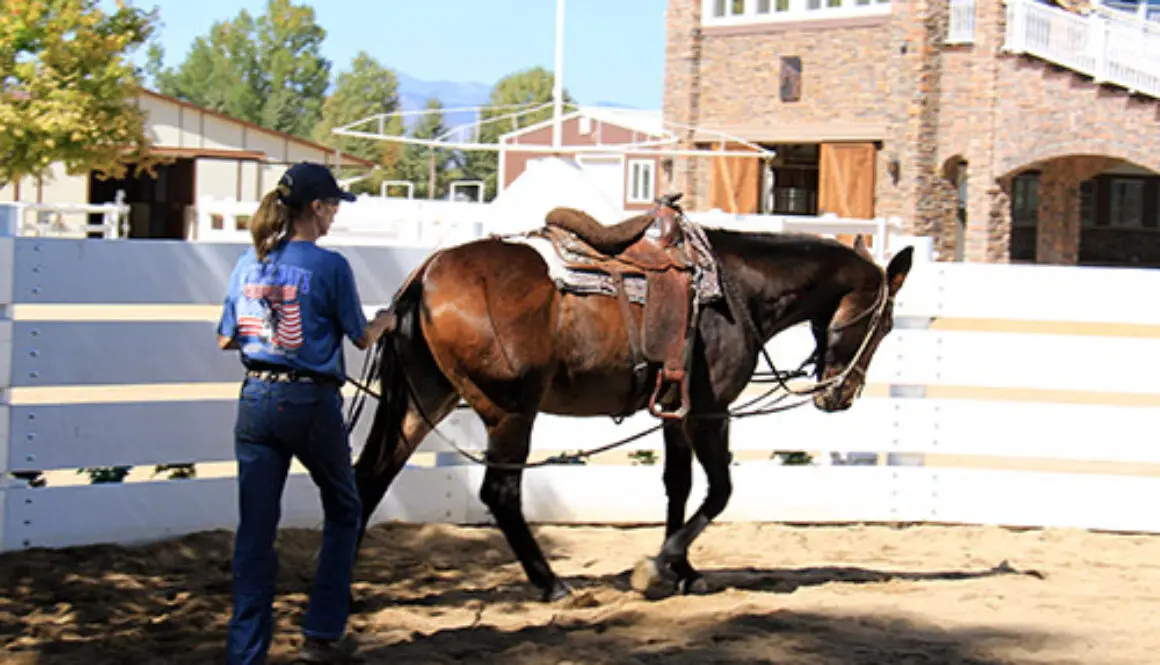
Getting a “feel” for the drive lines requires patience. Begin by using the “halt” command to change direction before making any turns to prevent confusion and resistance from your equine. Progress to making “S” turns through the middle of the round pen when your animal is ready. Once he is able to remain calm and obedient through the “S” turns, you can introduce the rein cues for the “Reverse”. All these maneuvers will help your equine to understand the rein cues coming from the drivelines before he is mounted and ridden.

Good posture, consistent rhythm and regularity of footfall patterns are key to achieving calmness in your equine. After getting into sync with your equine on the lead rope by matching steps with his front legs, getting into sync with his back legs will help him to stay calm while ground driving him from behind at the walk.

Once your equine has become proficient in his posture and balance, leading over obstacles, and various stages of lunging, you are ready to put your equine on the drive lines in the round pen. Find out how to make this transition successfully.

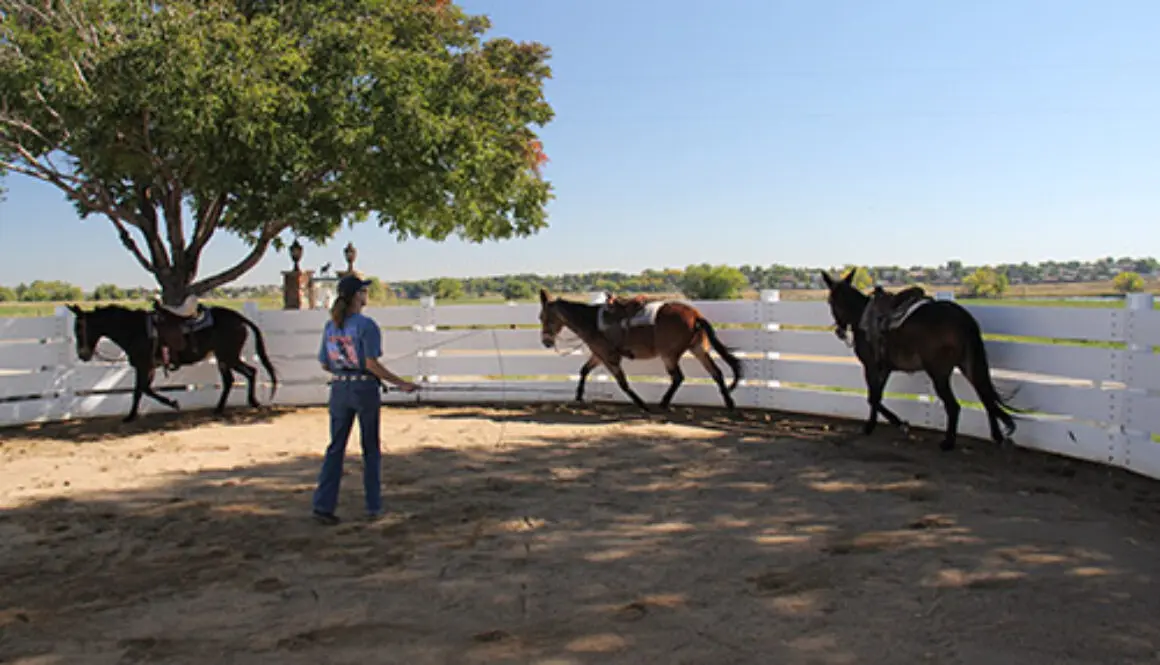
It’s easy to lunge multiple animals when they are all trained the same way with sequential, logical and purposeful training practices. Learn what you and your equines need to know to lunge together safely and successfully!
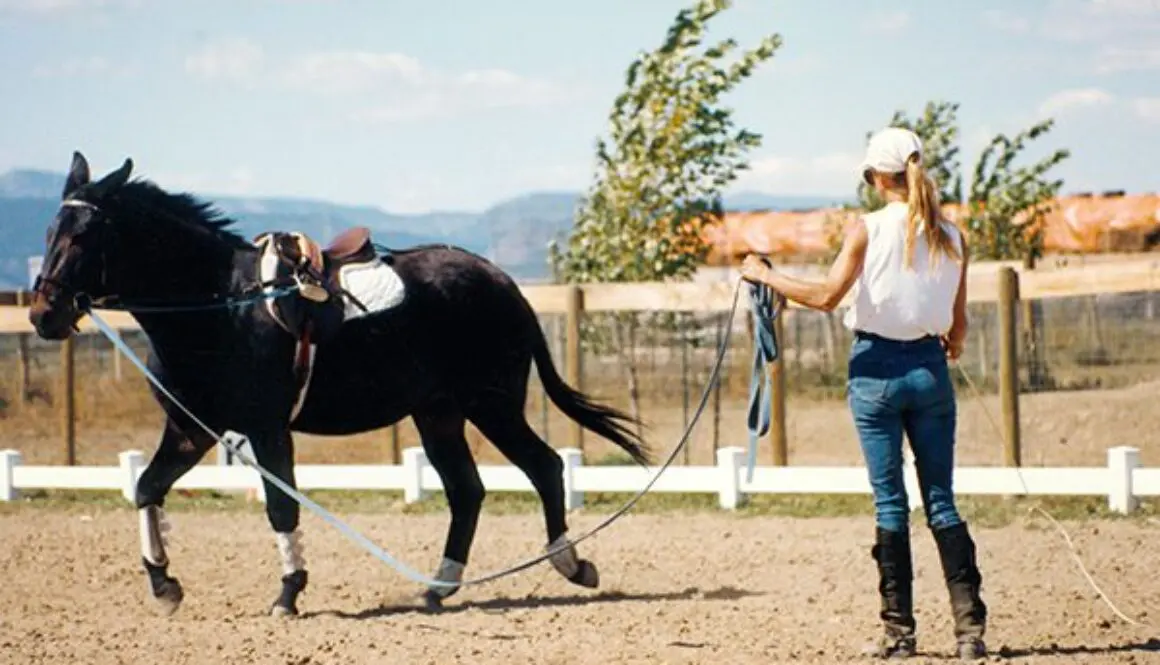
Know when your equine is ready to start working on lunging, and how to best set them up for success.
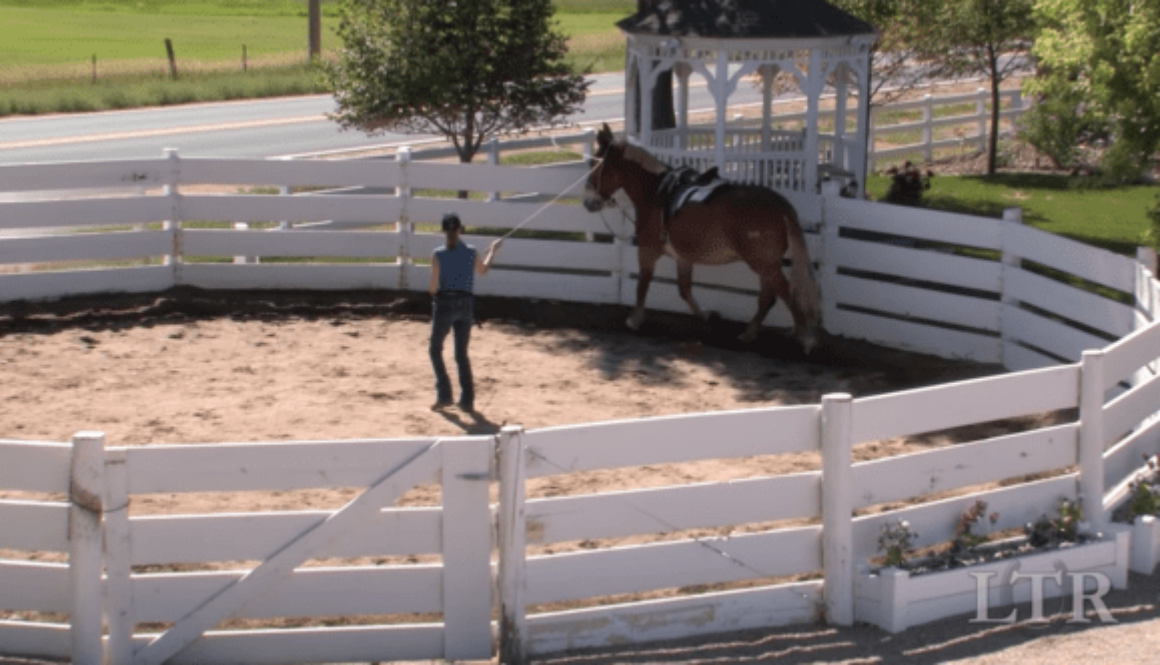
The whip is used in lunging to create movement and encourage impulsion in the equine and should never be used in an abusive manner. Learn how to use it the RIGHT way in Meredith’s latest training tip!
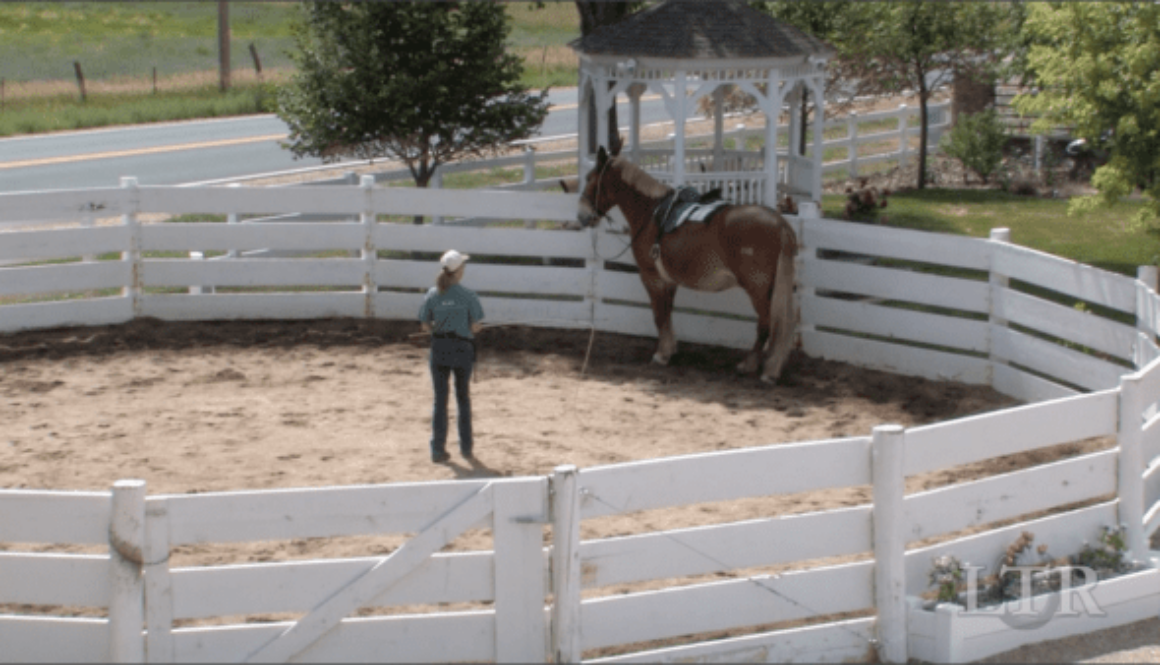
It is important to learn the elements of good communication through verbal commands and body language. You’ll find an equine who is willing to comply when he understands what you are asking!